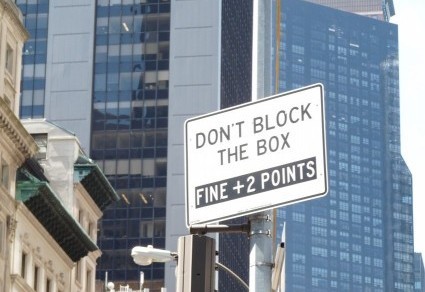The title of this post begins with an adverb and a preposition, in that order. For those who’ve never heard the expression “again with,” imagine those words spoken in exasperation, the same tone you’d use for “not again!” (eyeroll optional). I hear “again with” often in New York City, but I don’t know whether it’s in common use in other areas. Custom, not set-in-stone grammar rules, generally governs prepositions. I wait “on line” in New York, but my granddaughter, who lives in Seattle, waits “in line.” Both of us are grammatically correct (and usually impatient).
Although you have a fair bit of leeway with prepositions, some usage is downright strange:

The odd texture of this photo comes from the screen in front of the sign. Every time I pass “these windows,” I wonder why a double preposition (“BY or NEAR”) appears. Either would make the same point. Coupled with the tripled exclamation point in the last line, I suspect the people living behind “these windows” aren’t happy with their ground-floor apartment. In NYC, that location means you’re essentially living in (on?) a crowded sidewalk, because screens and glass do little to keep out smoke and between-puff conversation.
Another confusing preposition:

I hope the company’s food prep is better than its grammar, because “since” means the company was established at some point between 1983 and the present — including, say, this morning. A different preposition, “in,” would place the company in the “thirty years and counting” category, which I suspect is where it belongs.
Another:

I’m not sure why, but “repairs on” sounds odd to me. It makes me envision someone hovering above a necklace or a ring, loupe and screwdriver in hand. A helicopter jeweler, perhaps, for this era of helicopter parents? I’d substitute “to jewelry” or “repair of jewelry” or simply “jewelry repair.”
Last photo:

To be honest, I’m not sure what this sentence means, regardless of prepositions. I do know that “in points” should be “at points,” but the significance of “affected by” escapes me. Theories welcome AT any time, DURING any time period, FOR the foreseeable future.
Like this:
Like Loading...







































